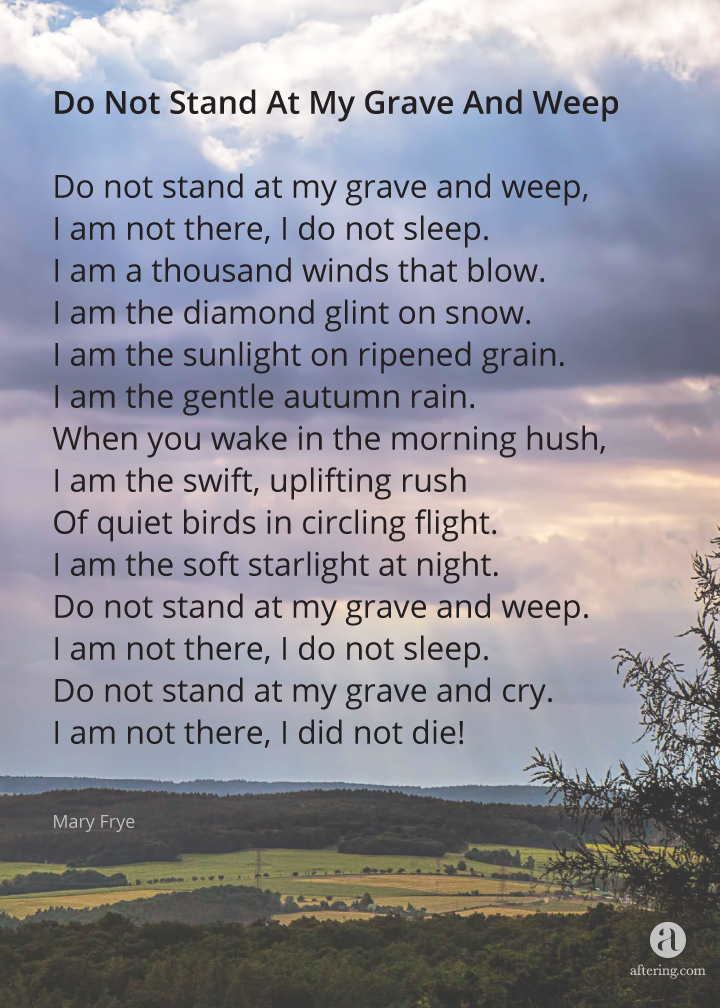

She wrote it down on a brown paper shopping bag. She had never written any poetry, but the plight of a German Jewish girl, Margaret Schwarzkopf,who was staying with her and her husband, inspired the poem.

Mary Frye, who was living in Baltimore at the time, wrote the poem in 1932. Mary Elizabeth Frye nee Clark was born in Dayton, Ohio, on November 13th 1905. The following was taken from The London Magazine December / January 2005: The most widely circulated author is Mary Fry. GradeSaver, Web.Do not stand at my grave and forever weep.ĭo not stand at my grave and forever cry.

"“Do Not Stand at My Grave and Weep” and Other Poems Themes". Next Section Quotes Previous Section Glossary How To Cite in MLA Format Barbour, Polly. Will review the submission and either publish your submission or provide feedback. You can help us out by revising, improving and updatingĪfter you claim a section you’ll have 24 hours to send in a draft. Instead of missing her, she wants her loved one to look for signs of her, knowing that this will make the grieving process easier. GriefĪnother of the poem's themes is grief the narrator knows that the loved one she has left is grieving deeply for her, and in some ways is trying to change the nature of her grief. The poem is putting forward the suggestion that death is not the end, it is merely a changing of state and that there our other realms of our existence that the living can still connect with. She is not going to be lying in a box under the ground, but rather, her soul will be part of the next life and also become a part of the natural world. We are thankful for their contributions and encourage you to make your own.Īlthough this poem is often considered to be a "death poem", in actuality it is more of a "life after death" poem the narrator, speaking to a loved one still living, is trying to explain the nature of death and what comes after. These notes were contributed by members of the GradeSaver community.


 0 kommentar(er)
0 kommentar(er)
